Companions are plants that provide some benefit to the other plants nearby. The right companion plants can help a fig tree by deterring pests and attracting beneficial bugs. But which plants are the friendliest for fig trees, and which will end up causing trouble? Read on to learn how to choose the best fig tree-loving plants for your garden.
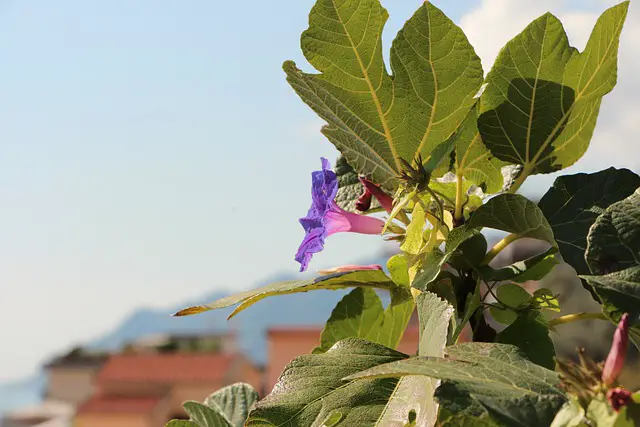
We may receive commissions from purchases made through links in this post, at no additional cost to you.
I planted a new fig tree in my garden a couple of years ago. It’s doing well, giving me a consistent crop…but it’s not very well incorporated into my garden design. The poor tree needs some companion plants to tie it into the rest of the landscape. But which plants are the most beneficial for fig trees? And, perhaps more importantly, is there anything I should avoid planting?
The best companions for fig trees are those that attract pollinators, deter pests and disease, or have similar growing conditions. Mediterranean herbs, wildflowers, strawberries, comfrey, rue, and marigolds are good options. Avoid nightshades, heavy feeders, and deep-rooted plants near fig trees.
I’m determined to settle in my fig tree near some beautiful, helpful, productive companion plants. Now begins the fun part of selecting the perfect plants for my particular circumstances. Before diving into a long list, let’s look at what to consider when choosing good companion plants for fig trees.
Choosing What to Plant Near a Fig Tree
What do fig trees need from companions?
Fig trees are native to the Middle East and Mediterranean regions, which means they prefer things sunny, warm, and not too wet. Some of the best companion plants for figs will be those that prefer similar conditions, or that are native to those same areas. A plant that needs a lot of moisture, for example, might be a poor choice because it will draw moisture away from the fig tree.
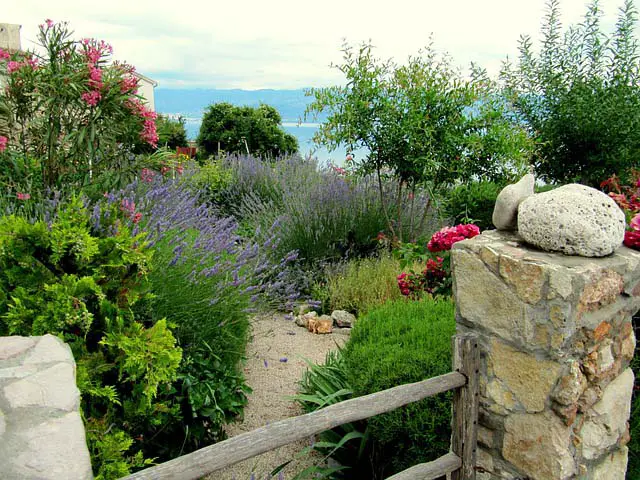
Figs have notoriously aggressive, shallow root systems. Their roots can spread far – around twice the size of the tree’s canopy. A fig tree can struggle if planted next to something that has similarly aggressive roots, where both plants are competing for space and nutrients.
Because of their extensive root growth, fig trees are pretty good at seeking out the nutrients they need from the ground. It’s helpful to grow some companion plants that enhance the nutrients in the soil and avoid those that are heavy feeders.
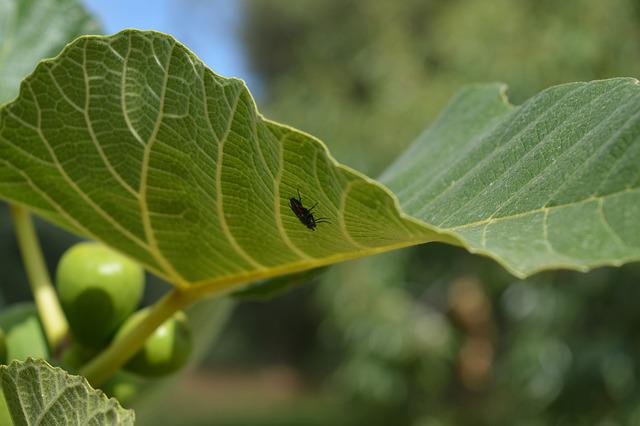
Many companion plants are good at repelling harmful bugs or attracting beneficial insects that prey on the bad ones. Does your fig tree have issues with pests like mealy bugs, aphids, or fruit flies? Your choice of companion plants can help deter those pests. You can also choose plants that attract good insects and pollinators to help the fig tree be as productive as possible.
What might affect your choice of companion plants?
Consider the way a fig tree grows: it lies dormant in winter, starts to put out new growth in early spring, forms a leafy canopy and baby figlets, which then ripen into full-grown figs, and finally, the tree prepares to drop its leaves and go dormant again.
You may want to choose companion plants that reach their peak of growth and flowering before the fig canopy fully forms (by May in most zones). In the heart of summer, fig tree leaves can cast fairly dense shade, which may not be ideal for many plants.
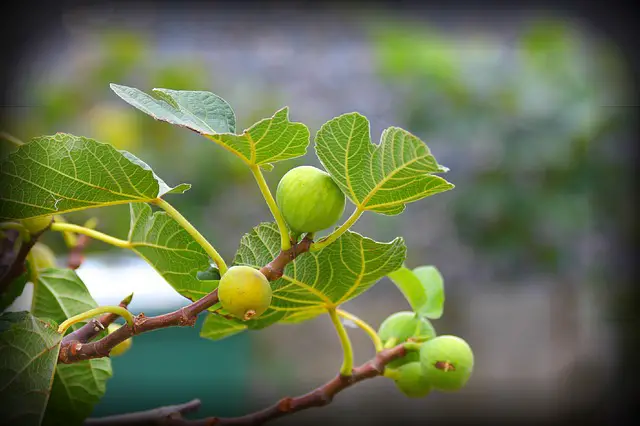
The plants that will grow best under the fig tree canopy (if any) will be different than those that would thrive outside the canopy. Differences in sun exposure, moisture, temperature, and proximity to the tree’s roots can affect which plants you choose for these locations.
Does your fig variety need pollination to produce fruit? Choose some pollinator-friendly plants, such as wildflowers, to encourage the right insects. Even self-pollinating common fig varieties will benefit from pollinating insects. Figs will generally grow larger and sweeter (due to the developing fruit drawing in more sugar) with the help of pollination.

Curious about any garden-related terms? Click on a highlighted word in the text, or visit The Fruit Grove Glossary to find out more.
What are you trying to accomplish in your garden?
Perhaps your goal is to include as many edible plants as possible in your landscape. Fig trees can grow comfortably next to many vegetables, herbs and other fruits.
Learn more: 9 Edible Plants to Grow with Fig Trees.
Are you going for a Mediterranean-inspired landscape? Prioritize plants that grow naturally in that region, or one with a similar climate, such as rosemary or lavender.

For a cottage garden look, stick with wildflowers and old-fashioned plants, such as comfrey and chamomile.
If your priority is simply the most productive, best-tasting figs possible, then choose a variety of companion plants. You’ll want some that attract pollinators, repel pests, and enhance soil health without competing with the fig tree.
The Most Helpful Plants for Fig Trees
These are all-around workhorses with the most benefits for fig trees. Many of these plants are good companions for pretty much everything in the garden – a good reason to make space for a few.
1. Alpine/Woodland Strawberries
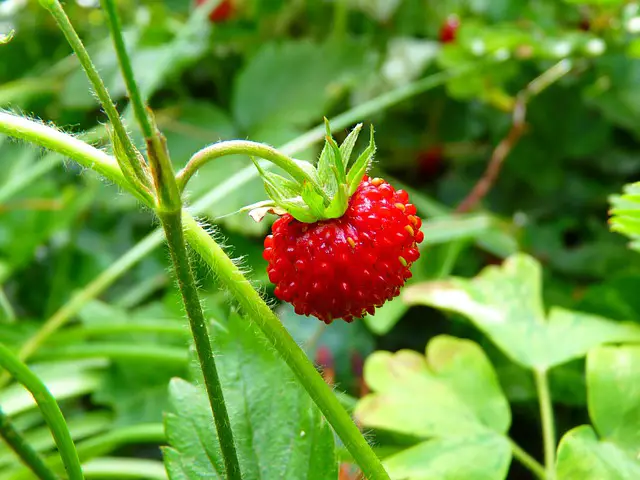
Strawberry plants, particularly alpine or woodland varieties, have many benefits for fig trees. Alpine strawberries are smaller (8-10 inches) than the beefier garden varieties, and they serve as excellent groundcover and weed suppressants. They can tolerate many soil types and withstand drought well.
Alpine strawberries can be a good choice to plant underneath a fig tree because they thrive in the dappled shade. They’re pretty too, with small white flowers and the fruit suspended on stems above the plant rather than below its leaves. As a perennial, they’ll keep coming back – meaning you won’t have to dig under your fig tree and potentially disturb its roots year after year.
2. Marigolds
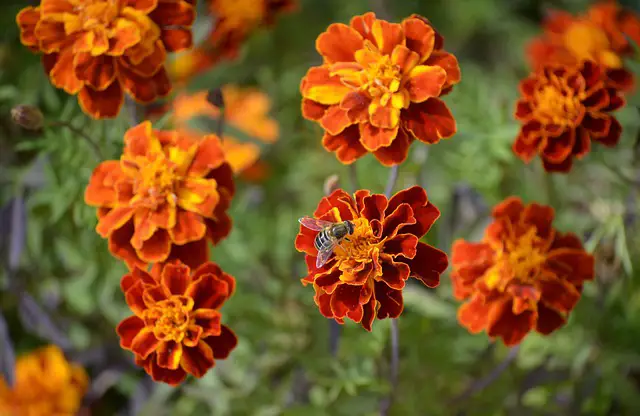
Marigolds (specifically the tagetes genus) are wonderful for protecting against root knot nematodes, which are hard to get rid of and can be fatal for fig trees. Nematodes are microscopic worms that feed on the roots of plants, but marigolds’ roots secrete a chemical that repels them.
Marigolds also deter harmful beetles and encourage the growth of mycorrhizal fungi in the soil, which has been shown to improve the nutrient uptake in fig tree roots. If you live in a warmer climate, try African marigolds, which are more heat- and drought-tolerant than the classic French marigolds.
3. Comfrey
Comfrey is a wonderful all-around companion plant for fig trees. It grows 2-5 feet tall and attracts lots of pollinators and other beneficial insects, with its purple, blue, pink, or white bell-shaped flowers.
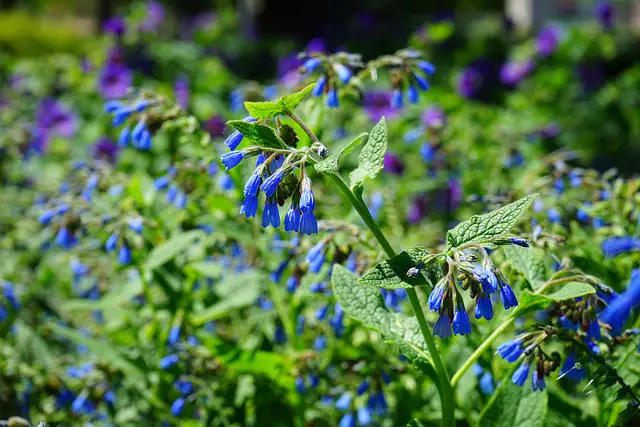
Russian comfrey, in particular, is said to be an excellent companion for figs, partly because it has sterile seeds and wont spread aggressively. Its roots will grow straight down (6-8 feet) and pull up nutrients to the surface of the soil where the fig tree’s roots are.
Comfrey is a great choice to grow in clay soil because those long tap roots can help loosen the soil over time. The entire plant is also great for compost, as it breaks down fast and is rich in nutrients.
4. Rue
Rue is an ornamental Mediterranean perennial that thrives in poor soil. It prefers hot and dry conditions and is a light feeder, making it a perfect companion for fig trees. Rue has bluish-grey leaves and yellow flowers, and it grows in clumps about a foot high, perfect for filling in the area near the base of the tree.
Rue deters beetles, aphids, slugs, and snails, among other pests. Just make sure it isn’t planted near basil, sage, mint, cabbage, or cucumbers as it can inhibit the growth of those plants.
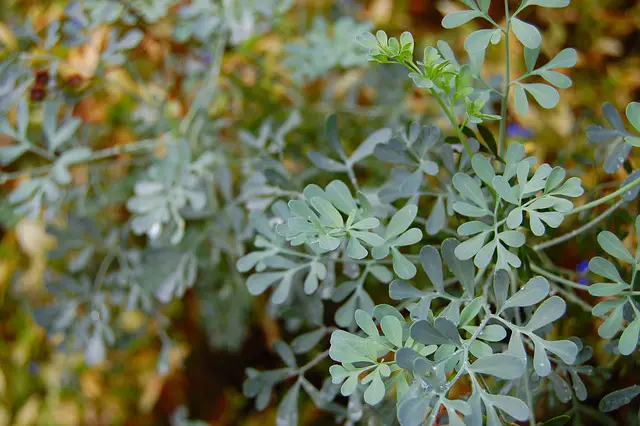
5. Nasturtium
Like rue, nasturtium is excellent at deterring harmful bugs in the garden. It is unusual because it attracts pollinators and predatory insects while repelling pests like aphids, beetles, and whiteflies. It loves poor, dry, lean soil and has no effect on the taste of figs when planted nearby. It is typically a vining plant, and can even serve as a groundcover, shading the soil under a fig tree.

6. Wildflowers
Wildflowers have not been genetically manipulated and are wonderful for attracting pollinators and other beneficial insects to fig trees. Plant wildflowers within 50 feet of your tree to reap all of the benefits of these companions.
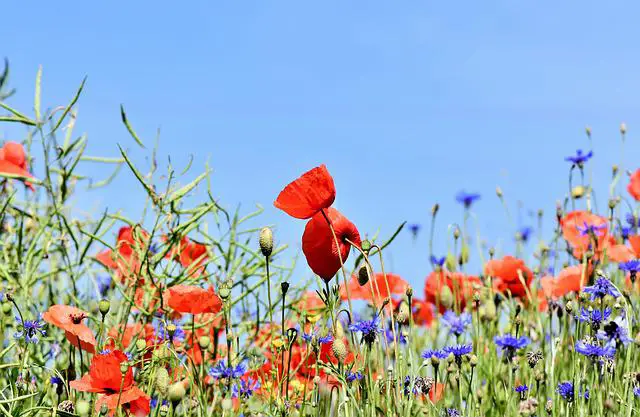
- Sweet alyssum
- Calendula
- California poppy
- Coneflower
- Lupine
- Daisies
7. Herbs
Many herbs are great companions to fig trees, particularly those that are native to the Mediterranean region or similar climates. These herbs like hot, relatively dry conditions and won’t compete for nutrients as much as herbs from wetter climates. The herbs on this list are all good at attracting pollinators and deterring pests. Some herbs, such as lavender and chamomile, are even said to improve the taste of figs when grown nearby.
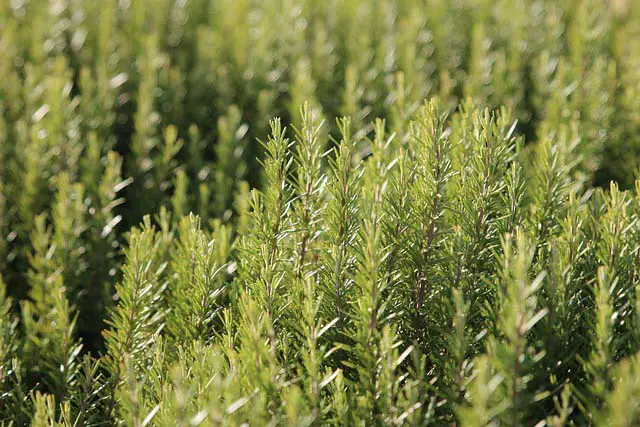
- Rosemary
- Thyme
- Sage
- Lavender
- Chamomile
- Marjoram
- Dill
- Tarragon
- Lemon Balm
Other Good Companion Plants for Figs
This list of plants includes those that may not be as specifically helpful (other than some flowers attracting pollinators), but are known to grow well near fig trees. Some of these plants have been found growing naturally near figs (such as elderberry), while others are simply attractive or compatible choices (like clematis or spring bulbs).
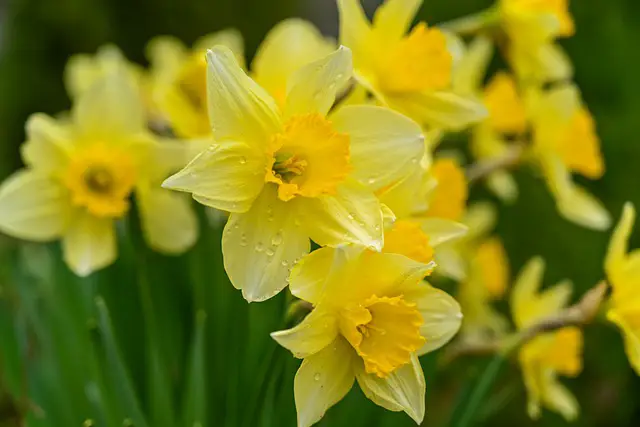
- Jerusalem artichoke
- Clematis
- Bulbs (such as snowdrop or daffodil)
- Elderberry
- Blackberry
- Quince
- Groundcovers (such as sedum or ground ivy)
What NOT to Plant Near Fig Trees
Intensive, close companion planting is not good for fig trees. Their shallow roots could be harmed by aggressive root systems or frequent digging. The following types of plants should be avoided near fig trees.
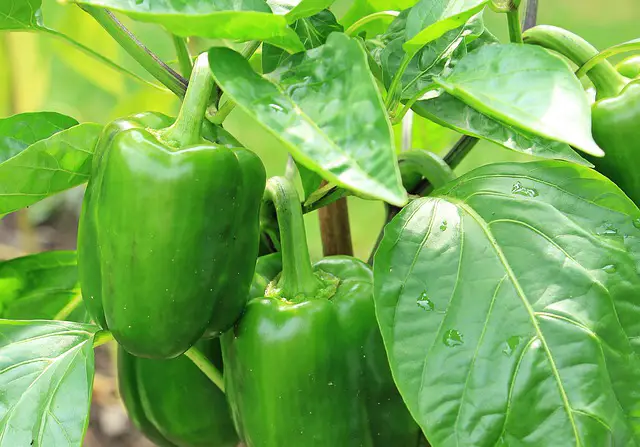
Nightshade Plants
Avoid growing any plants in the nightshade family near fig trees, including tomatoes, potatoes, eggplant, tomatillos, and bell peppers. Nightshades attract many garden pests and are notoriously disease-prone, and they could easily spread these problems to a fig tree.
Heavy-Feeding Plants
Fig trees tend not to grow well close to plants that are heavy feeders, as that will mean competition for nutrients in the soil. Some common nutrient-hogging plants are sunflowers and peonies.
Deep-Rooted Plants
Although fig tree roots are wide-spreading and somewhat invasive, they won’t like competing with the deep, strong roots of other plants. Keep root vegetables (potatoes, carrots) and other fruit trees a good distance away, and make sure you plant your fig tree away from walls or other trees with aggressive root systems (like silver maples or willow trees).
Controversial Fig Companion Plants
These plants have some benefits for figs, but even among experts there is conflicting information on whether it’s a good idea to plant these plants near your fig tree.
Rhododendron
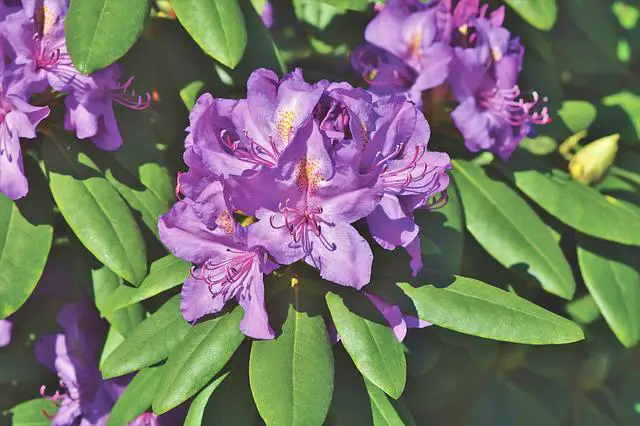
Many “companion plants for fig trees” lists will include rhododendron, largely because they have shallow root systems and like acidic soil. However, they may be more problematic than helpful. Rhododendrons tend to be invasive, spreading easily from even a small section of roots. They are known to inhibit seed germination and seedling growth nearby. And if you are considering planting rhododendrons near a fig tree, they may have trouble getting enough sun to flourish.
Stinging Nettles
This is another plant that is frequently listed as a good companion for figs. Stinging nettles do have many characteristics that can benefit fig trees. They attract ladybugs, bees, and butterflies and repel aphids. They are rich in silica, magnesium, iron, and calcium, nutrients that can help increase disease resistance.
The biggest reason for labeling stinging nettles “controversial” is because of the amount of space they need. They spread quickly and thickly, which can be hard to control in a smaller garden. And, true to their name, stinging nettles really do “sting” – the fine hairs on the plant release irritating chemicals and are painful if touched.
Mint
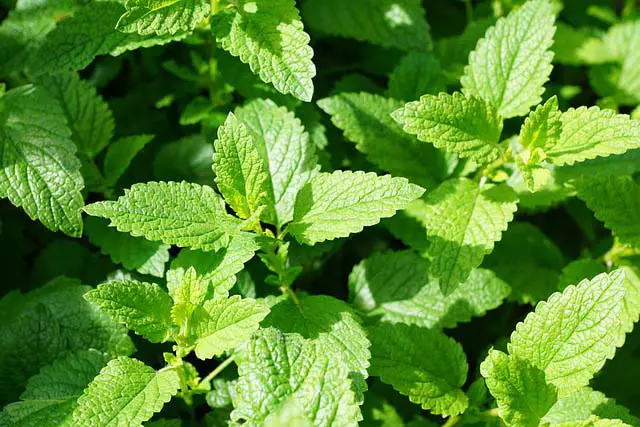
Mint has many of the same benefits as the other herbs listed above: tolerant of dry, hot conditions, attracting pollinators, and repelling pests. However, the big downside to mint is its invasiveness. If you’ve ever grown mint you know how it can and will spread and pop up all over, especially where it’s not wanted. Keep mint growing in a pot near your fig tree and you get all the benefits without the headache.
Companion Planting with Potted Figs
Potted fig trees have somewhat different needs than those grown in the ground, as the roots are restricted and there is less organic material available to the plant. There are clearly many advantages to growing certain plants near fig trees, but does the same hold true for fig trees in containers?
As a rule, growing companion plants in potted fig trees is not recommended, in order to avoid competition for nutrients in the soil. However, there is evidence that some companion plants can cool the surface of the soil in the pot, or serve as a living water gauge for the fig tree.
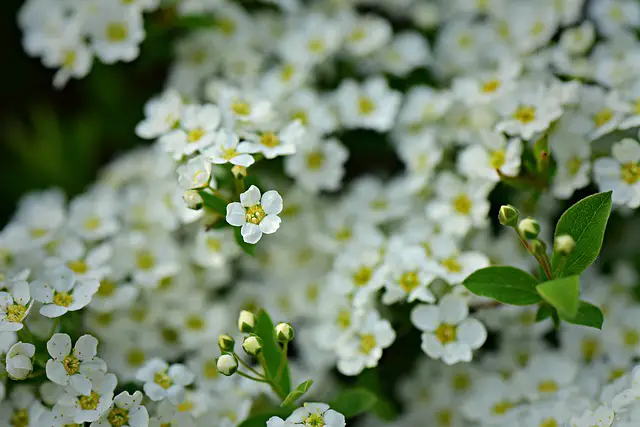
Learn more: Can Potted Fig Trees Be Underplanted?
Planting some small annual flowers, such as alyssum or dwarf marigolds, around the base of a potted fig tree will certainly fill in the empty space and discourage weeds. Potted figs with companion plantings have been found to keep a lower soil temperature (by a few degrees) throughout the season. If you live in a hot climate, this can mean more moisture retention and less frequent watering.
Some growers have had success planting lettuce or herbs as companions to potted figs. Lettuce and many herbs are light feeders, so competing for nutrients shouldn’t be an issue. Not only is it a good use of space, but the plants can serve as a living reminder to water the fig tree – if you see them wilting, chances are your fig could use a drink too.
As long as your fig tree is in a large enough container, adding shallow-rooted annual plants shouldn’t be a problem. Make sure you keep up a good fertilizing regimen and there should be enough nutrients to go around.

